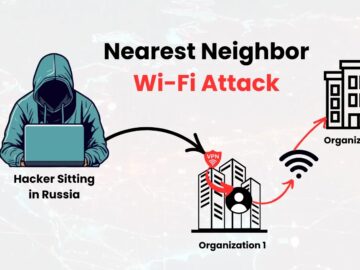Security teams drown in alerts but starve for insight. Blocklists catch the obvious. SIEM correlation gives clues. But only context reveals what an alert really means, and what you should do about it.
Every SOC sees thousands of signals: odd domains, masquerading binaries, strange persistence artifacts. On their own, these indicators mean almost nothing. A suspicious process might be malware or a legitimate update from a vendor you barely know.
But the moment you add threat context — history, connected IOCs, malware family relations, sandbox behavior — the picture changes completely.
Meet TI Lookup: The Context Engine
ANY.RUN Threat Intelligence Lookup is a real-time investigation tool that lets analysts instantly understand what they’re dealing with — from domains and IPs to file hashes and URLs.
It’s powered by rich data crowdsourced from 15,000+ SOCs and researchers worldwide, continuously enriched by ANY.RUN’s sandbox detections. Instead of wasting time digging through multiple feeds, analysts get actionable context in seconds.

You achieve:
- Instant clarity: Quickly identify whether an IOC is malicious, suspicious, or benign;
- Deeper context: View sandbox behavior, relations, and threat actor links in one place;
- Smarter triage: Speed up incident response with verified data and fewer false positives.
Context turns data into decisions. And decisions stop breaches from happening.
Here are five highly practical ways SOC analysts use context to speed triage, reduce noise, and fight more effectively: powered by ANY.RUN’s Threat Intelligence (TI) Lookup.
Tactic 1: Domain Intelligence – From Suspicious to Confirmed Threat
The Alert:
Domain contacted: logrecovery[.]com
Without Context: Could be legitimate cybersecurity resource. Requires manual investigation across multiple platforms.
With TI Context:
- Observed in AsyncRAT and Amadey sandbox executions;
- Linked to active command-and-control infrastructure;
- Associated with information-stealing campaigns and botnets.
domainName:”logrecovery.com”

Immediate Action: Block the domain at your proxy/firewall, tag it as a high-confidence IOC in your threat intelligence platform, and hunt retroactively for any historical connections in your network traffic logs.
Why It Matters: Stealer malware exfiltrates credentials, session tokens, and sensitive data. Every minute it remains unblocked is a window for data theft. Context lets you move from “investigate” to “contain” immediately.
Stop hunting for context, start acting on it. Sign up to trial Threat Intelligence Lookup and see how it works Tactic 2: Email Attachment Analysis – Spotting Campaign Patterns
The Alert:
Suspicious attachment: Electronic_Receipt
Without Context: Generic filename. Could be legitimate invoice or phishing. Requires time-consuming manual analysis.
With TI Context:
- Detected in a number of malware analyses;
- Part of credential-harvesting campaigns;
- Linked to a most dangerous Tycoon phishing kit.
filePath:”Electronic_Receipt”

Malware samples featuring file pattern
Immediate Action: Add the file hash to your SIEM blocklist, check egress logs for any systems that may have already connected to associated C2 domains, and update mail gateway filters to catch variants.
Why It Matters: Tycoon 2FA can intercept user credentials and session cookies to bypass MFA, enabling unauthorized access to accounts even with additional security measures. Organizations using cloud services are at the most risk.
Recognizing campaign patterns helps you understand the scope: is this a targeted attack or part of a broader spray-and-pray operation? Context answers that question instantly.
Tactic 3: IP Address Intelligence – Understanding Payload Delivery
The Alert:
Outbound connection to: 45.155.205[.]11
Without Context: Could be legitimate software update checks. Requires manual investigation across multiple platforms.
With TI Context:
- Observed in DBatLoader and GuLoader sandbox executions;
- Linked to active command-and-control infrastructure;
- Associated with information-stealing campaigns.
destinationIP:”162.241.62.63″

IP context: malware and campaign associations
Immediate Action: Block the domain at your proxy/firewall, tag it as a high-confidence IOC in your threat intelligence platform, and hunt retroactively for any historical connections in your network traffic logs.
Why It Matters: Stealer malware exfiltrates credentials, session tokens, and sensitive data. Every minute it remains unblocked is a window for data theft. Context lets you move from “investigate” to “contain” immediately.
Tactic 4: Process Behavior – Detecting Credential Theft
The Alert:
Unusual process detected: New Text Document mod.exe
Without Context: Can be a nonchalantly attributed document, but the .exe extension arouses suspicion. Manual verification required.
With TI Context:
- Observed in XRed backdoor campaigns;
- Associated with session hijacking and credential theft;
- Tampers with Windows registry, establishes persistence.
filePath:”New Text Document mod.exe”

Malware running the similar process
Immediate Action: Check all endpoints for this process name and file hash, flag any instances for immediate investigation, and monitor for suspicious authentication behavior patterns like impossible travel or unusual access times.

Malicious process poorly disguised as a document
Why It Matters: XRed is a backdoor designed for long-term system infiltration and control and stealing sensitive data. It combines elements of remote access Trojans (RATs), infostealers, and backdoors to execute a range of malicious activities.
The Alert:
Registry modification: SoftwareMicrosoftupdate
Without Context: Registry changes happen constantly. Could be legitimate software, Windows updates, or persistence mechanism. Difficult to prioritize without additional information.
With TI Context:
- Appears in known malware persistence mechanisms
- Seen in stealer campaigns
- Used to maintain access across system reboots
- Indicator of established compromise, not initial infection
RegistryKey:”Software\Microsoft\update” and threatLevel:”malicious”

Search for malware that modifies registry
Immediate Action: Escalate immediately to incident response team, scan affected hosts for additional IOCs associated with notorious stealers, and check for lateral movement indicators across your environment.
Why It Matters: If you’re seeing persistence mechanisms, the attacker has already established a foothold. This isn’t prevention, it’s containment. Context tells you this is a critical escalation requiring full IR protocols, not just endpoint remediation.
The Context Advantage: From Hours to Minutes
Each of these scenarios represents a fork at the road of a SOC analysts. Without context, you’re stuck in investigation mode chasing down leads, correlating data points, and hoping you make the right call. With context, you skip directly to response.
Consider the time savings:
- Manual TI gathering: 20-45 minutes per artifact across multiple platforms
- TI Lookup with context: Seconds to retrieve comprehensive intelligence
- Decision confidence: Immediate clarity on threat severity and appropriate response
For a SOC analyst triaging 50+ alerts per day, that’s the difference between constantly playing catch-up and staying ahead of threats.
How Threat Intelligence Delivers Context Automatically
TI Lookup doesn’t just tell you whether an artifact is malicious, it shows you the full picture:
- Sandbox execution history: See how the artifact behaves in real, interactive malware analysis sessions
- Associated campaigns: Understand which threat actors and malware families use this indicator
- Infrastructure relationships: Map connections between domains, IPs, and file hashes
- Temporal context: Know if this is an emerging threat or part of an established campaign
Instead of piecing together intelligence from multiple sources, you get a unified view that connects artifacts to actual malware behavior.
Start Making Context-Driven Decisions Today
Next time an alert hits your queue, ask yourself: do you have the context to act confidently, or are you about to spend the next thirty minutes hunting for it?
Context isn’t a luxury for SOC analysts. It’s the difference between reactive scrambling and proactive defense. The threats are already using automation and infrastructure at scale. Your intelligence should, too.
Ready to add context to your threat hunting workflow? Explore ANY.RUN’s TI Lookup and see how instant threat intelligence transforms the way you analyze and respond to security alerts.
Speed without guessing, confidence without over-triaging. Choose threat intelligence trial option for your SOC. 



